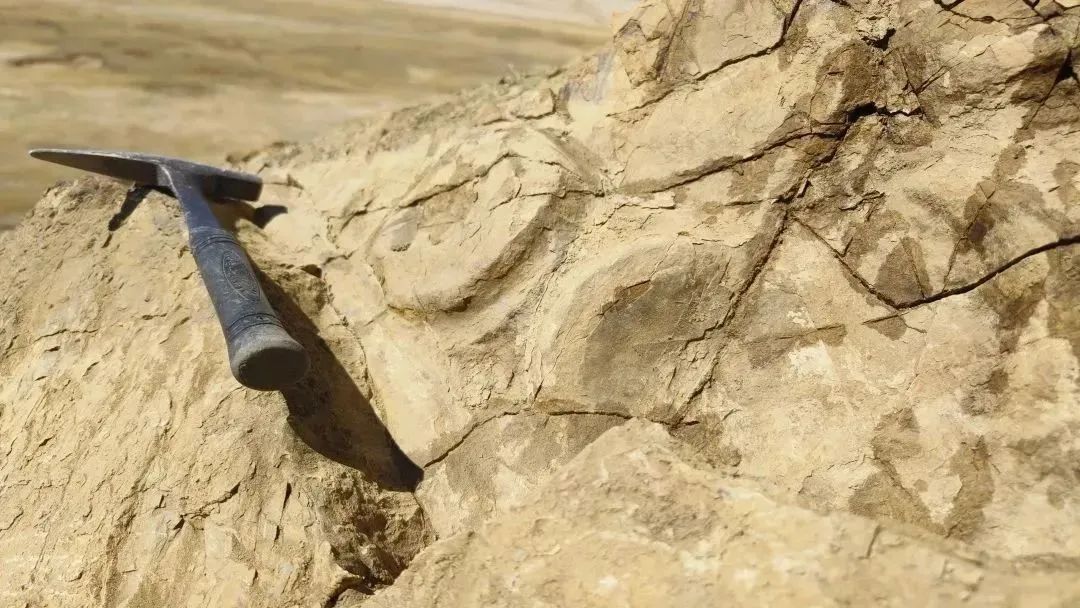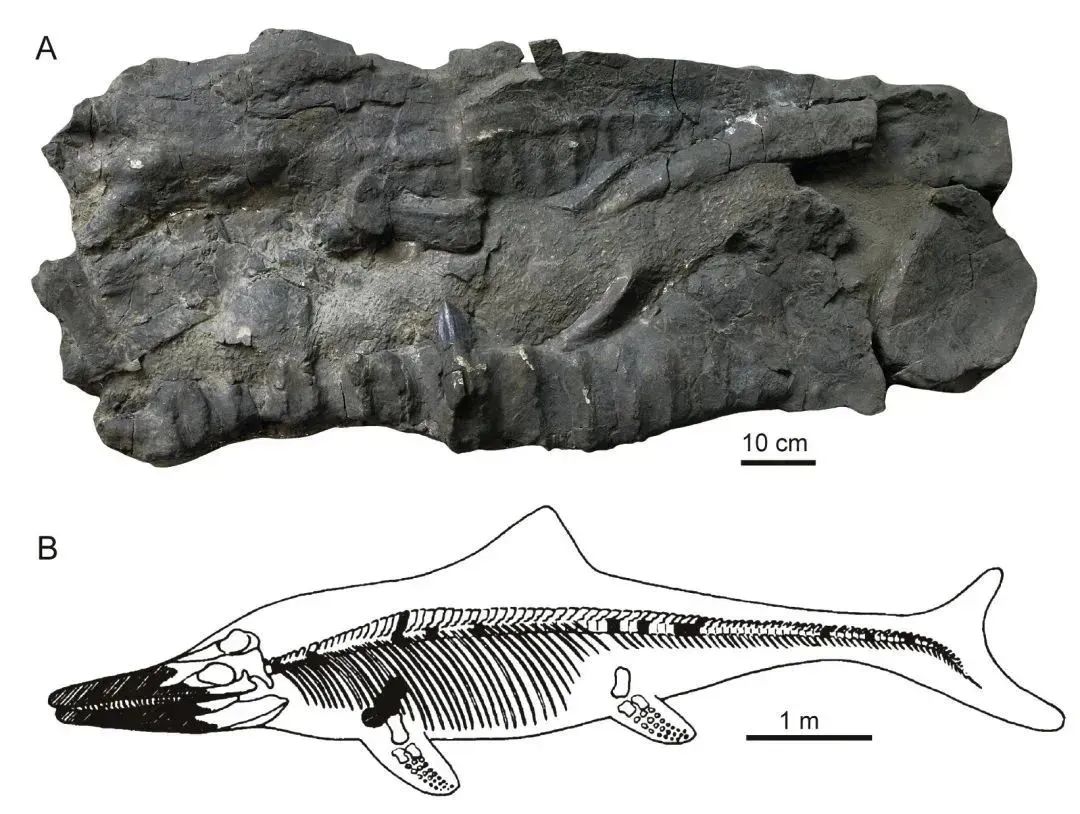
Fossils of Himalayasaurus' vertebrae and ribs discovered near Gangkar Town in Dingri County, southwest China's Xizang Autonomous Region. /IVPP
Fossils of Himalayasaurus' vertebrae and ribs discovered near Gangkar Town in Dingri County, southwest China's Xizang Autonomous Region. /IVPP
Chinese scientists have discovered fossils of the Himalayasaurus, a prehistoric deep-sea predator, approximately 4,000 meters above sea level in southwest China's Xizang Autonomous Region.
Two Himalayasaurus fossils were found near Gangkar Town in Dingri County, about 100 kilometers away from the mountaineering base camp of Mt. Qomolangma, the world's highest peak.
This latest discovery will further our understanding of the largest known prehistoric animal found on the Qinghai-Xizang Plateau, and will contribute to the study of the evolution of life in the region during the Mesozoic Era.
The Himalayasaurus is an extinct reptile that dominated the sea 210 million years ago, long before dinosaurs ruled on land. With a long mouth, sharp teeth and a body more than 10 meters long, these giant reptiles were fast swimmers and mainly fed on fish and invertebrates.

Himalayasaurus fossil samples (above) and a restoration image of the Himalayasaurus (below). /IVPP
Himalayasaurus fossil samples (above) and a restoration image of the Himalayasaurus (below). /IVPP
Chinese researchers first found fossils of the species in the 1960s during an investigation in the Mt. Qomolangma area, which rose from the deep sea due to a collision of tectonic plates.
The most recent discovery was made earlier this year by an expedition team consisting of scientists from the Institute of Vertebrate Paleontology and Paleoanthropology (IVPP) under the Chinese Academy of Sciences.
The fossils contain well-preserved vertebrae and ribs, which were rare in previous finds, said Wang Wei, an associate research fellow at the institute.
The cross-sections of the recently discovered vertebrae are about the size of a baseball cap, Wang said.
"How did the Himalayasaurus get so big? What kind of habits did it have? Which part of the globe was it most closely related to during its time? These questions will be the focus of our research," Wang said.
Researchers plan to strip the fossilized Himalayasaurus from the surrounding rocks, and examine the fossils in detail using microscopes and computed tomography scans.
"The Qinghai-Xizang Plateau is like a huge laboratory for the observation of the evolution of life, and our goal is to reconstruct as completely as possible the history of life on the plateau over the past 200 million years," said Deng Tao, head of the institute.
Early scientific research on the Qinghai-Xizang Plateau has accumulated a large quantity of basic scientific data and filled in the blanks of paleontological knowledge, Deng said.
In the last decade, a series of new discoveries on the plateau is helping paleontologists comprehensively examine the important role the plateau played in influencing the evolution of biodiversity in the Cenozoic Era.
(Cover: A restoration image of the Himalayasaurus. /Li Rongshan via IVPP)
Read more: China's Peak Mission expedition reaches Mt. Qomolangma summit
Source(s): Xinhua News Agency